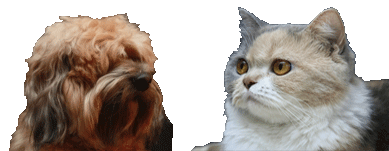Information about the Otterhound
The Otterhound is an old British dog breed, developed in the early 1800’s. It is a scent hound, and was developed to hunt otters. It is currently recognised by the Kennel Club as a Vulnerable Native Breed, with around 1000 animals worldwide.
The Otterhound was created from a number of different breeds found in the United Kingdom and France. It is believed that the basis for the breed was the Southern Hound, with additional Bloodhound ancestry. In the early 20th century the Griffon Nivernais was crossed into the breed, and one particular dog, Boatman, a Grand Griffon Vendeen/Bloodhound cross became an ancestor for several kennels.
It is one of the ancestral breeds of the Airedale Terrier.
The Otterhound is a large, rough-coated hound with an imposing head. Originally bred for hunting, it has great strength and a strong body with long striding steps. This makes it able to perform prolonged hard work. The Otterhound hunts its quarry both on land and in water and it has a combination of characteristics unique among hounds; most notably an oily, rough, double coat and substantial webbed feet.
Otterhounds generally weigh between 80 and 120 pounds (36 and 54 kg). They have extremely sensitive noses which make them inquisitive and perseverant in investigating scents. Consequently, they need particular supervision when outdoors. They are friendly dogs with a unique bass voice which they use frequently.
Otter hunting dates back to the early medieval period, with references it is found as early as 1360. The Otterhound, however, can only be traced back as a distinct breed as far as the early 1800’s.
The otter is one of the largest and most intelligent carnivorous mammals in Europe. To be equal to the otter, an Otterhound was said to need “a Bulldogs courage, a Newfoundlands strength in water, a Pointers nose, a Retrievers sagacity, the stamina of a Foxhound, the patience of a Beagle, and the intelligence of a Collie”.
In 1978, due to the dramatic decline in otter numbers, the use of Otterhounds to hunt otters by scent was banned in Britain. Otterhound Packs were kept all over the United Kingdom, but were most famous in the Lake District and Devon. The Kendal and District Otterhounds in particular were one of the longest running otter hunts from 1921 to 1977, and several of the dogs in the pack at the end of the 1977 hunting season became ancestors of the dogs alive today. As virtually all the remaining packs were privately owned, it was left to the owners to decide what to do with their dogs. A few hunts switched to hunting mink or coypu, but many hunts ceased to exist altogether. As the dogs had been selectively bred for their hunting capabilities, only a few of the bloodlines were suitable for breeding into companion animals
The average lifespan of the breed is a little over 10 years. A quarter will live 12 to 15 years. At least one hound is known to have lived to be 16 years old.
The Otterhound enjoys considerable exercise, but can also be a couch potato. They can be good family dogs but need to be kept in a secure property since they can jump fences up to 5 feet high.
In spite of the small gene pool, the Otterhound is generally a healthy breed, but is subject to many of the same complaints as all large, rapidly growing dogs.
Common problems that can occur are elbow and hip dysplasia, a malformation of the hip and elbow joints. They are not always painful, but can cause lameness and impair mobility. It can also result in arthritis. Badly affected hounds should not be bred from, but most Otterhounds have a poor hip and elbow score. The problem can be reduced by making sure that young Otterhounds do not jump down from high places, go up and down the stairs or walk too much on very hard surfaces while bones are still growing. this enables the muscles around the sockets to strengthen and develop, providing more support.
Otterhounds can also be subject to ear infections, due to the shape of their ears, and Bloat (or gastric torsion), due to their deep chest.
Epilepsy and seizures are also known to affect the breed, and can be hereditary. There is ongoing research into the causes of epilepsy in Otterhounds. For reasons currently unknown, epilepsy in Otterhounds in the United States does not appear to be fatal, while epilepsy found Otterhounds from the United Kingdom is frequently untreatable, and is usually fatal.
There are an estimated 1000 Otterhounds in the world. It is considered to be the most endangered native breed in Britain, with only 15 new registrations in 2011. This is partially because Otterhounds have never been numerous, and even in the early 20th century, when otter hunting was at the height of its popularity as a sport, the number of dogs was still small. They are on the list of Vulnerable Native Breeds as identified by the UK Kennel Club, and great efforts are being made to save the breed.
[Back]

